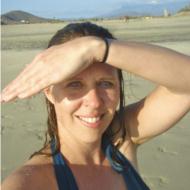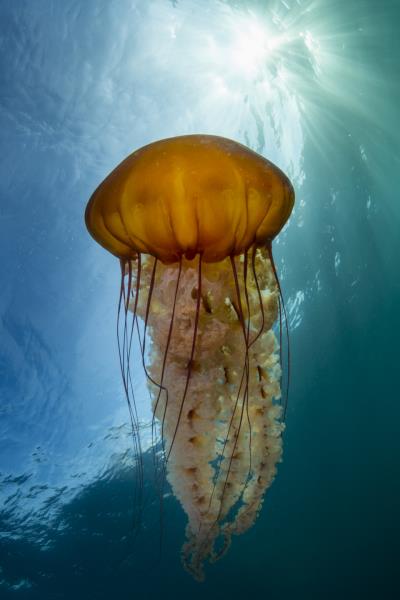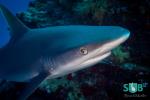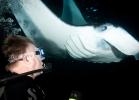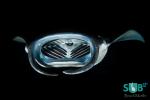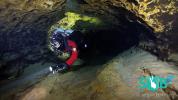 Advice on Scuba Diving in Northern California Coast, United States
Advice on Scuba Diving in Northern California Coast, United States
Part 1: Overview of Scuba Diving in Northern California Coast, (United States)
The San Francisco Bay makes up the heart of northern California as far as population, culture and transportation. The Bay itself is not suitable or popular for diving, the deep underwater canyon under the Golden Gate Bridge creates a seriously swift current as the water bottlenecks through and into the greater bay. The island of Alcatraz sits in the bay, a notorious federal prison operated between 1933-1963. The surrounding waters and their reputation as being swift, frigid and shark infested enforced the security of the island. While in San Francisco ferry over to Alcatraz, bike the Golden Gate to Sausalito and ferry back again to the wharf. The hills of San Francisco are nothing less than fascinating as well as the people and culture of this brilliant city.
For those visiting northern California to dive get the city out of your system for a day or two then head south to Santa Cruz, Monterey then Big Sur for amazing dive sites.
From the Bay Area head south for diving. The hippy, chic town of Santa Cruz offers some dive sites and dive shops and outfitters that can get you out into the chilly Pacific. However, the town of Monterey is known as the dive capital of California and passion for scuba diving and marine preservation and research is paramount. Just 2 hours from San Francisco, Monterey Bay is not to be missed. Non-diving companions will not be disappointed by this interesting, progressive town. Make it a priority to visit the Monterey Bay Aquarium famous for stimulating a love for ocean and its life in the young and old.
Below Monterey Bay is a coastal wonderland of huge pines and foggy beaches with rock formations sticking out of the ocean. If you head south from Monterey along U.S. 1 you will twist and turn for miles along amazing shores making your way to the heart of Big Sur. The area is very remote and there are no good roads south of Carmel that connect coastal HW 1 to the inland HW 101 until you get just north of Morro Bay 120 mile to the south. This stretch of road along the coast is classic, the three hour drive is well worth it. Bug Sur offers cold, beautiful, extreme scuba diving. Big Sur itself is a small town and also a region. This wildness has a mystical feel that is ideal for campers, hikers and brave, experienced scuba divers.
The waters off northern California are notoriously cold and the surf is ideal for surfers but not ideal for divers. However, the thrill of diving in the kelp forest in a “cozy” dry suit in the winter months is an experience not to be missed. The best part about diving in northern California is the passion of the local divers for marine research and conservation of the amazing ecosystem, Jacque Cousteau would be proud.
Part 2: Dive Sites, Marine Life & Environment in Northern California Coast, (United States)
The Pacific waters off the northern coast of California are cold, ranging from 45-58 degrees F. Diving here is known for the strong pulling and pushing surge making diving challenging. The Giant kelp beds are world renown offering an underwater world of dark twisting fronds.
Bodega Bay is about an hour north of the San Francisco Bay. UC Davis Bodega Marine Laboratory is stationed on Bodega Bay. The research center focuses on marine and onshore conservation and research. BML offers classes and laboratories as well as dive training facilities. For those interested in hunting for abalone, the beautiful iridescent shells are found off the beach at many of the shore dive locations near Bodega Bay. Windmill Cove is one such shore dive, once you push past the surge the area remains fairly shallow and you can find the abalone shells and an abundance of life at just 20 feet. Like most shore dives off the northern coast of California, this dive is not for the inexperienced diver, the waters are chilly so a wet suit or dry suit is highly recommended.
Bodega Bay is one of the points of the “Red Triangle”. The Farralon Islands 20 miles off the coast of San Francisco and Pidgeon Point with its famous lighthouse south of the Bay Area make up the obtuse triangle notorious known as the territory of the Great White shark. The more likely inhabits of the Red Triangle are elephant seals, harbor seals, sea otters and sea lions. About 40% of Great White attacks on humans in the United States have taken place in this zone and the Red Triangle accounts for about 10% of the world's Great White attacks. Still, encounters or even sightings of Great Whites are very rare. According to a University of Florida webpage shark attacks in the USA (including the Hawaiian Islands) total 1,005 versus 2,463 shark attacks worldwide. 44 of the attacks in the USA were fatal versus 471 fatalities worldwide. Almost half of the world's recorded shark attacks are in the United States. Still...I defend that the magnificent creatures are not so interested in human flesh. Consider how many millions if not billions of people swim in the oceans of the world each year, looking at the numbers, the chances are very slim of being attacked by a shark.
Swimming and diving among the swaying, crowded kelp beds can easily psyche a diver out...knowing that the huge, notorious Great White may be looking for lunch. Their meals, the seals and sea lions are a much more common sights as they suddenly dart into your vision. Their quick entrance and exit from your view gets your heart racing, challenging you to control your breath, relax and enjoy the underwater thrill of diving off northern California's extensive coastline.
Monterey Bay is known to offer the most popular and accessible dive sites in the region. Coast Guard Pier known by most as simply Breakwater is a site in just 10-65 feet of water right offshore. Breakwater is perfect for beginners and novice divers giving an opportunity to move through a kelp forest without tremendous surge. Lover's Point is another popular shore dive off Monterey where divers can mingle with kayakers and harbor seals.
The wilderness of Big Sur south of Monterey Bay is remote, offering experienced divers opportunities to shore dive into the Giant kelp forests that line the coast. It is a must to don a dry suit, build your courage and brave the cold pounding surge to get out deep enough and away from rocks to experience some peace in the ever moving, pulsating world of underwater Big Sur. Garrapata State Park in the far northern realm of Big Sur offers unmarked shore dive spots. Jade Cove off Gorda, California is another popular dive site that is no named for the green jade stone divers strong enough to brave the intense surge hunt for along the bottom. Hikers beware, all along the Big Sur coast and along most of northern California's coast there is Poison Oak. A low shrubby plant that is irritating at best to most people, wear pants and make sure your ankles are covered when rummaging through the wild coast brush to get to the beaches.
The steep marine terraces and hidden coves of Big Sur offer unlimited diving potential along the vast coastline for those equipped to explore. The water is known to surge even at depths of 70 feet challenging both the swimmer and the quality and visibility of the water. Maneuvering around seamounts and rock pinnacles challenges even experienced divers. Then there is the hazards of jellyfish like the Lion's mane or the Fried egg jellyfish to looks like a yolk are to be avoided. Once you get in a relatively calm spot you will delight at the colorful and abundant strawberry anemones that carpet the bottom and the occasional, hard to spot wolf eel that is not really an eel at all. The eel look alike is in the class of ray-finned fishes. Partington Point is a shallow, relatively easy dive site for Big Sur whose rock walls are completely covered with sharpnose crabs.
Part 3: Dive Shops, Airports & Logistics of Diving in Northern California Coast, (United States)
For those arriving into northern California to dive, the most popular and prominent airport is San Francisco International Airport. There are few if any commercial dive sites in the actual San Francisco Bay Area, however there are many retail and instructional dive shops that offer excursions south and north of the Bay Area.
Just south of the Bay Area is the pretty, coastal town of Santa Cruz and the dive center called Aqua Safaris. You can get to Santa Cruz by car from the San Francisco area in about an hour or take a hop flight into Santa Cruz Sky Park. Aqua Safaris specializes in underwater photography, spearfishing and deep, cold water dive expeditions. Any Water Sports is another scuba shop near the Bay in the city of San Jose. This shop specializes in retail and scuba courses as well as dive trips to sites around the world. Each month Any Water Sports hosts what they call the “Fun Dive”, a local spot usually nearby in northern California. The shop requires that divers joining in on the fun dives be experienced and have cold water and night diving gear. Many of the dive trips organized by the San Jose shop meet and dive off Monterey.
Bamboo Reef Scuba Diving Centers serve a large scuba diving niche in California with its three stores: San Francisco, Monterey Bay and Marin just north over the Golden Gate Bridge. The Monterey store offers boat dives in the Monterey Bay on an almost daily basis. The dive sites offers kelp forests and rock pinnacles to explore on this day trip. Monterey has a lot of great dives and divers making dive shop competition a serious business in town. Some of the most popular and unique dive shops in the area include Aquarius Dive Shop, Seven Seas Scuba, Glenn's Aquarius II and Dive to Survive Scuba a shop with a training pool just a short walk from Macabee and San Carlos Beaches.
The best way to get to Monterey is to fly into San Francisco and drive the coast. If you have a private plane there is also the Monterey Regional Airport that does offer some commercial flights from around California and as far as Denver, Colorado. Monterey is actually an ideal place to fly in if you want to head directly to Big Sur and skip the big city.
Big Sur is the forested wilderland and coastal wonderland of northern California. Most of the Bay Area dive shops and larger southern California dive shops offers expeditions to Big Sur. The area is remote and there are no “big” towns or centers in the region. There are some very small, locally owned and operated dive boat captains who can be hired for the more adventurous. Sanctuary Charters out of Carmel offer very private, catered dive excursions to Big Sur as well as the Silver Prince Charters harbored in Monterey Bay.
---- Book Your Diving ----
Fill in the Form Below.
Our hand picked regional partners will deliver no obligation quotes.
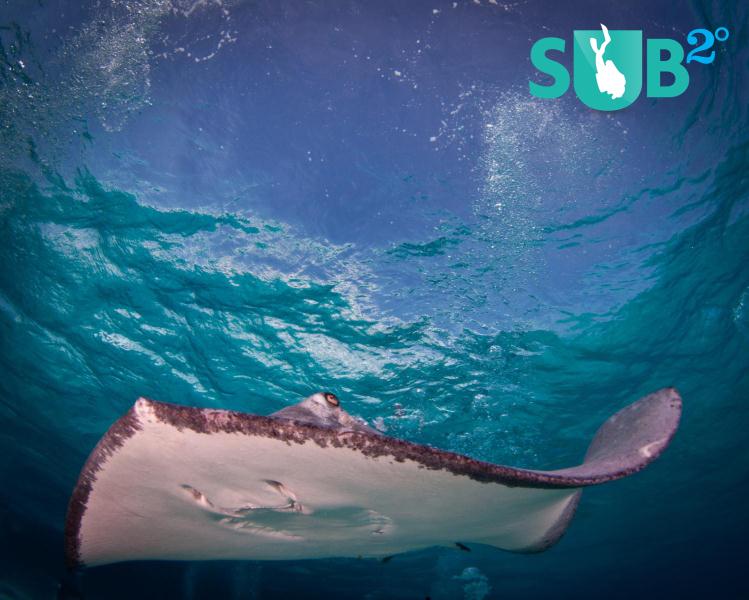
Tweets by @DiveAdvisorApp

